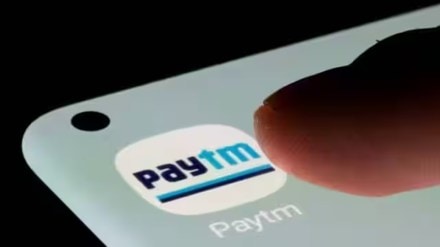Many entities are all set to launch audio-based payment confirmation devices like soundbox to capitalise on the rise in digital payments. But, prevailing challenges relating to connectivity and infrastructure pose major constraints to adoption, say experts.
“One bottleneck that we do see is the connectivity, especially when we go to rural areas and remote areas at large. The other bottleneck is the merchant’s capability to be able to afford the device,” Vivek Lohcheb, head of offline business, PhonePe said, adding that further adoption will hinge on whether lower strata of merchants can afford the device.
Recently, Paytm launched ‘Card soundbox’, a soundbox device that accepts card payments in addition to mobile payments. The device accepts both mobile and card payments across Visa, Mastercard, American Express, and RuPay networks.
At the same time, digital payment provider Pine Labs launched ‘Mini’, a visual and audio confirmation payments machine for merchants that allow contactless card payments and quick response (QR).
Paytm has a majority market share in soundbox segment, with the company launching a device in 2019. A QR-based soundbox costs Rs 299 and comes at a monthly subscription fee of Rs 125. Devices with card acceptance can cost Rs 999.
In its annual report for 2022-23(April-March), the company said that its deployed payment devices rose to nearly 7 million in 2022-23 from nearly 3 million in 2021-22. This in turn, gave a fillip to the company’s subscription revenues.
While the term ‘Soundbox’ was coined by Paytm, many other firms have launched their own sound-based payment confirmation devices.
“We are almost touching the largest competitor in terms of the number of active devices. The gap is not wide. With our constant innovation, I believe we will be the market leader in the next 6-9 months,” says Lohcheb.
So far, PhonePe has around 4 million “SmartSpeaker” devices in India. The company expects to hit 11 million devices by the end of 2024.
MobiKwik Co-founder and Chief Executive Officer Bipin Preet Singh feels that beyond their subscription revenue potential, soundboxes have the capacity to foster growth in other areas too.
“They play a pivotal role in streamlining payment processes for our partners, attracting a broader user base as businesses increasingly seek value-added services to improve operational efficiency,” he said, adding that more adoption of these devices by small enterprises will lead to an increase in transactions on the company’s payment platform and drive overall revenue growth.
Currently, around 7 million merchants are using these devices. Experts note that the number of merchants can rise to 70 million in the next couple of years.
While these devices are witnessing unparalleled ubiquity, experts acknowledge there are challenges with connectivity and infrastructure that pose major constraints with adoption.
In many regions, particularly rural areas, inconsistent internet connectivity and unreliable power supply can hinder the seamless operation of soundboxes. While there are massive improvements with the rollout of 5G and ongoing telecom infrastructure expansion, ensuring uninterrupted functionality in such environments still poses a significant challenge.
As these devices penetrate new markets and reach users who are not familiar with them, companies need to put in significant resources into convincing and educating the market, say experts.
“Similar to traditional point-of-sale machines, the deployment of these devices in remote areas can pose higher logistics and servicing costs for supplier. This is also a challenge,” says Primus Partners Managing Director Shravan Shetty.
Worldline India Executive Vice President Gulshan Pruthi notes that a key bottleneck to the adoption of these devices is the hardware price points, which are on the higher side. Here, the price of these devices can reduce by 25-30%. These devices must also offer some value-add that can be in addition to merely receiving payments.
Currently, companies are adopting two main strategies as far as soundbox is concerned. While entities like Paytm are looking at Soundbox as a standalone revenue generating business, others view it as an ancillary feature.
“While the product will remain a monetisation tool in the early days, prices will eventually see a downtrend as the novelty factor wears off and the price war happens. Acquirers will have to figure alternative monetisation options,” Ranadurjay Talukdar, Partner and Payments Sector Leader, EY India said.
Nevertheless, the growth in offline payments in semi-urban and rural centres will help address some of the issues around adoption.
